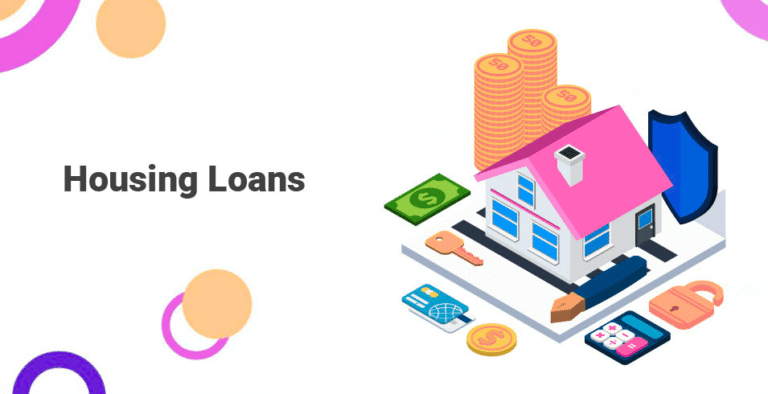Millennial & Gen Z Borrowing Trends: What’s Changing?
Millennial & Gen Z borrowing trends are reshaping the financial landscape in ways that surprise both banks and borrowers. Unlike their parents, these generations approach debt with new attitudes, tools, and priorities. They balance student loans, credit cards, and personal loans differently while experimenting with digital-first lending options. Understanding what’s changing in their borrowing behavior helps lenders, financial educators, and consumers adapt to a fast-evolving credit market.
The Shift in Borrowing Attitudes Among Young Generations
illennials (born 1981–1996) and Gen Z (born 1997–2012) grew up in completely different economic environments than Baby Boomers or Gen X. Millennials entered adulthood during the 2008 financial crisis, while Gen Z came of age in a digital-first, post-pandemic economy. These unique contexts shape how each group views credit, risk, and long-term borrowing.
- Millennials often carry higher levels of student debt, making them cautious with new credit.
- Gen Z is more experimental, leaning toward fintech apps, BNPL (Buy Now, Pay Later), and flexible lending solutions.
Both groups share a preference for transparency and digital accessibility, but their borrowing motivations vary.
Key Millennial & Gen Z Borrowing Trends
1. Student Loans Remain a Defining Factor
For Millennials, student debt is a lifelong financial anchor. According to recent surveys, many Millennials delay buying homes, getting married, or investing because of loan repayments.
Gen Z, however, is more cautious. They are choosing cost-effective education options, community colleges, and online certifications to minimize borrowing. This preventive mindset sets them apart from Millennials, who had fewer alternatives during their student years.
2. Rise of Buy Now, Pay Later (BNPL)
BNPL services like Afterpay, Klarna, and Affirm have become popular among Gen Z. Instead of using credit cards, younger borrowers prefer splitting payments into smaller, interest-free installments.
- Millennials use BNPL for big-ticket items like furniture or electronics.
- Gen Z uses it for smaller, everyday purchases, including clothing and cosmetics.
BNPL reshapes traditional credit card usage and reflects a shift toward instant, flexible borrowing.
3. Preference for Digital Lending Platforms
Mobile apps and fintech solutions dominate borrowing behavior. Instead of walking into a bank, younger borrowers prefer applying for loans online with instant approval and minimal paperwork.
Millennials value convenience and speed, while Gen Z expects mobile-first interfaces, AI-driven recommendations, and gamified financial tools. Traditional banks are racing to catch up with these expectations.
4. Credit Card Hesitation vs. Adoption
Millennials were initially cautious with credit cards, scarred by the 2008 recession. They feared falling into debt traps and leaned toward debit cards and prepaid options.
Gen Z, on the other hand, embraces credit cards earlier but uses them strategically. They focus on building credit scores for future home or auto loans, often pairing cards with budgeting apps to avoid overspending.
5. Homeownership Dreams, But Delayed
Both generations value homeownership, but affordability challenges delay the dream. Rising property prices and student debt force Millennials to rent longer.
Gen Z may follow a similar path, but their use of side hustles, online income streams, and investment apps could make them financially prepared for mortgages sooner.
6. Growing Interest in Personal Loans for Flexibility
Personal loans are becoming attractive due to lower interest rates compared to credit cards. Millennials often use them for debt consolidation, while Gen Z prefers them for funding side hustles, travel, or tech purchases.
This shift shows borrowing is no longer just about survival it’s also about lifestyle enhancement.
7. Sustainability and Ethical Borrowing Choices
Gen Z is especially conscious of where their money goes. They favor lenders and financial platforms that promote sustainability, ethical investing, and socially responsible practices. This adds a new dimension to borrowing that older generations rarely considered.
Comparison Table: Millennial vs. Gen Z Borrowing Behaviors
| Aspect | Millennials | Gen Z |
| Student Loans | High, long-term burden | More cautious, borrowing less |
| BNPL Use | For big purchases | For small, everyday items |
| Credit Cards | Hesitant, debt-averse | Strategic, credit-building focus |
| Loan Applications | Online preferred, but flexible | Mobile-first, instant approval only |
| Homeownership | Delayed due to student debt & costs | Delayed but planning creatively |
| Personal Loans | Debt consolidation & major needs | Lifestyle, travel, and side hustles |
| Financial Values | Convenience, lower costs | Ethical, sustainable, digital-first |
How Economic Factors Influence Borrowing
Several macroeconomic trends are shaping how Millennials and Gen Z borrow:
- Rising Inflation: Increases the need for short-term loans.
- Higher Interest Rates: Makes credit card debt more expensive.
- Gig Economy Growth: Creates unstable incomes, driving demand for flexible borrowing.
- Digital Transformation: Encourages fintech adoption over traditional banks.
Understanding these dynamics helps explain why borrowing patterns evolve differently across generations.
Financial Technology’s Role in New Borrowing Habits
Fintech apps are not just tools they are reshaping financial literacy. Platforms like Chime, SoFi, and Robinhood offer integrated services that mix saving, investing, and borrowing.
- Millennials use fintech mainly for convenience and better interest rates.
- Gen Z embraces fintech as part of their daily lifestyle, managing everything from allowance to investing on their phones.
👉 Tip: To compare different borrowing options effectively, you can use our loan calculator tool to see how interest rates and repayment terms stack up.
FAQs on Millennial & Gen Z Borrowing Trends
1. Why do Millennials borrow differently than Gen Z?
Millennials experienced the 2008 recession and carry higher student loan debt, making them more cautious. Gen Z grew up with digital tools and has different borrowing options, leading to more experimental financial behavior.
2. Are Gen Z borrowers more responsible with credit?
Yes, Gen Z often uses credit strategiMillennial & Gen Z Borrowing Trends: What’s Changingcally to build scores. They rely on budgeting apps and fintech tools to avoid overspending, unlike early Millennials who often learned through trial and error.
3. Why is BNPL so popular among young generations?
BNPL offers short-term, interest-free payments, which feels less risky than credit cards. It appeals to younger consumers who value flexibility and instant gratification.
4. Do Millennials and Gen Z avoid traditional banks?
Not entirely, but they prefer fintech platforms for speed, transparency, and digital convenience. Banks that fail to adapt risk losing younger customers.
5. How do student loans impact Millennials differently from Gen Z?
Millennials carry massive student loan debt, affecting life milestones like buying homes. Gen Z, aware of this burden, often chooses more affordable education routes to avoid similar debt.
6. Is Gen Z more likely to use personal loans?
Yes, but for different reasons. While Millennials use personal loans to consolidate debt, Gen Z often borrows for experiences, gadgets, or entrepreneurial ventures.
7. How important is credit-building to Gen Z?
Very important. Many Gen Z borrowers open secured credit cards or low-limit accounts early to build strong credit histories for future financial goals.
8. Do both generations want to own homes?
Yes, but affordability challenges delay the dream. Gen Z may find alternative paths, such as co-investing or using digital real estate platforms.
9. How does technology shape borrowing trends?
Fintech apps, AI-driven recommendations, and instant approvals are now expected. Technology makes borrowing more accessible, but also risks over-borrowing if not managed carefully.
10. What role does financial literacy play?
A huge role. Gen Z is more proactive about financial literacy thanks to social media, apps, and online communities. Millennials often had to learn through experience, sometimes leading to costly mistakes.
Conclusion
Millennial & Gen Z borrowing trends reflect broader changes in economy, technology, and culture. While Millennials carry heavy student debt and approach borrowing cautiously, Gen Z embraces digital-first, flexible solutions like BNPL and fintech apps. Both generations seek convenience and transparency, but their borrowing goals differ Millennials focus on stability, while Gen Z values lifestyle and financial independence.






